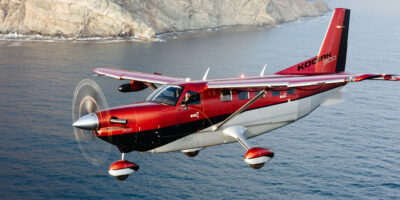KMSP – A Comprehensive Guide to Minneapolis–Saint Paul International Airport in Microsoft Flight Simulator
Minneapolis–Saint Paul International Airport (KMSP) is a prominent feature in Microsoft Flight Simulator (MSFS). Known for its complex operations and vast layout, KMSP gives virtual pilots a detailed scene for testing flight skills. Understanding its intricacies can greatly enhance the simulation experience.
Basic Infrastructure of KMSP
KMSP is located between the cities of Minneapolis and Saint Paul in Minnesota. It’s a major hub for Delta Air Lines and a gateway for many international flights. In MSFS, players find accurate representations of runways, taxiways, and terminals, capturing the real-world structure.
The airport has two main terminals: Terminal 1-Lindbergh and Terminal 2-Humphrey. Terminal 1 is the larger and busier of the two, handling most of the international and major domestic flights. Terminal 2 caters to low-cost carriers and some domestic routes.
Runways and Taxiways
- Runway 12R/30L: The longest runway, used for most large aircraft and international flights.
- Runway 12L/30R: Parallel to 12R/30L, handles both arrivals and departures.
- Runway 17/35: A north-south runway, sometimes used during crosswind conditions.
- Taxiways: Developed to offer efficient aircraft movement, taxiways link all parts of the airport and are simulated with precision in MSFS.
Terminals and Gates
Terminal 1 contains Concourse A through G, with gates offering various amenities and realistic boarding actions in MSFS. Terminal 2 is smaller but equally detailed, with simulated boarding processes reflecting real-world operations. Each gate is mapped for specific airlines in the simulator, mirroring real assignments.
Weather Dynamics at KMSP
KMSP’s location means it experiences a range of weather conditions, from severe cold and snow in winter to storms in summer. MSFS utilizes real-world weather data, making conditions at KMSP dynamic and challenging, enhancing realism. Pilots must adapt to changes in visibility, winds, and runway conditions, similar to real-life pilot experiences.
Winter Operations
Snow and ice significantly impact flight operations. In MSFS, the simulation of snow accumulations and icy runways necessitates careful navigation and takeoff procedures. Aircraft de-icing can be part of the simulation, mirroring real-world protocols used at the airport.
Thunderstorms and Wind
Summertime can bring powerful thunderstorms across the region. This affects flight strategies within MSFS, with pilots needing to adjust approach paths and descents based on wind shear and sudden gusts. The simulator’s rendering of storm cells and light conditions replicates real-life challenges faced by aircraft in the area.
ATC and Navigational Aids at KMSP
Air Traffic Control (ATC) simulation within MSFS offers realistic communication and sequencing instruction, requiring players to follow precise instructions while on the ground and in-flight. KMSP has a VOR (Very High Frequency Omnidirectional Range) navigation system guiding aircraft approaching from different quadrants.
The control tower at KMSP manages complex air traffic, including converging runway traffic patterns. In MSFS, pilots practice corridor entry timing and sequencing under busy conditions, mimicking the experiences of real pilots managing departures and arrivals.
Instrument Landing System (ILS)
Runways equipped with ILS allow pilots to execute precision approaches, especially useful under low visibility conditions. MSFS’s precise simulation of ILS approach paths ensures accurate threshold captures and descent rates, making the pilot’s approach steady and reliable.
Flight Planning and Routes
Comprehensive flight planning is crucial for using the simulator effectively at KMSP. Common routes include domestic flights to major US cities and international services to Europe and Asia. MSFS allows for realistic flight planning tools that incorporate real-world airways and airspace restrictions.
Common Departure and Arrival Routes
- Departure: Flights east usually take the GEP6 departure, providing efficient vectoring.
- Arrival: The STAR (Standard Terminal Arrival Route) ensures smooth transition from cruise altitude to final approach.
Players use real-time route databases to chart courses reflective of actual flight paths, enhancing the authentic airline operation experience in the simulator.
Community and Training Resources
Flight simulation enthusiasts and real-world pilots often gather in online forums and social media to share insights about flying at KMSP in MSFS. These communities offer valuable tips, from video tutorials on specific approach techniques to discussions about optimizing aircraft setup for challenging conditions.
Training Resources
There are a wealth of resources available for individuals keen on mastering KMSP within MSFS. Online courses, webinars, and YouTube series provide in-depth guides on flight dynamics, handling, and ATC communication. These resources equip pilots with the skills needed to navigate one of the busiest airports simulated in the game.
“`
